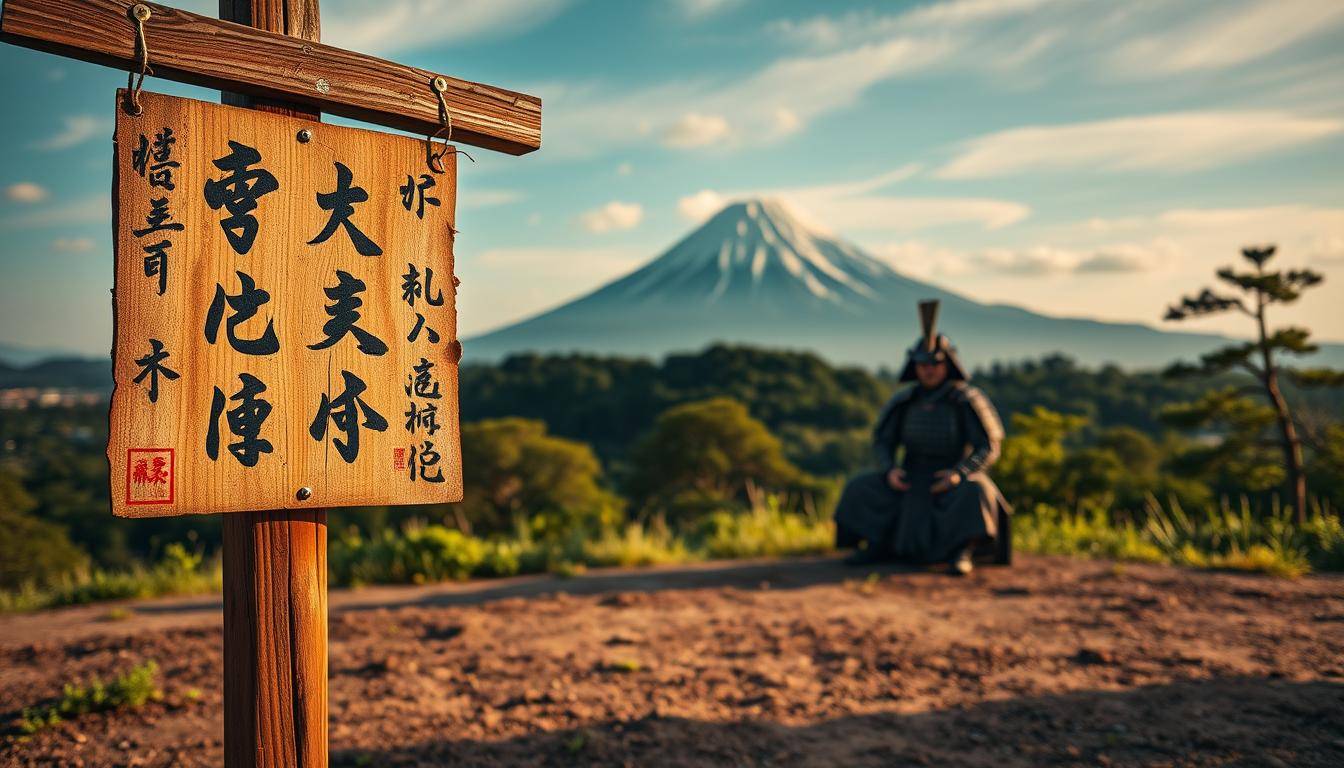“You must understand that there is more than one path to the top of the mountain” – a truth spoken by Japan’s legendary swordsman, whose teachings still cut through modern complexity. Born Shinmen Takezo in 1584, this warrior-sage transformed from a duelist with 60 undefeated battles into a philosopher whose insights shape leadership and strategy today.
His journey reveals more than martial mastery. By rejecting comfort and status, he crafted a life of radical discipline – principles captured in his final work, Dokkōdō, written days before his death. These 21 rules aren’t relics. They’re battle-tested tools for overcoming distraction, fear, and self-doubt in a chaotic world.
What makes his approach timeless? It merges razor-sharp strategy with unflinching self-awareness. Whether facing an opponent or inner conflict, his methods teach how to observe clearly, act decisively, and remain unattached to outcomes. This isn’t about swords. It’s about forging mental resilience that outlasts fleeting challenges.
Key Takeaways
- A 17th-century warrior’s undefeated record stemmed from strategic thinking, not brute strength
- True mastery requires sacrificing short-term pleasures for lasting growth
- 21 principles written at life’s end offer actionable steps for personal transformation
- Mental clarity and adaptability matter more than rigid plans in overcoming obstacles
- Self-reliance and disciplined focus remain critical skills in modern professional landscapes
Introduction to Miyamoto Musashi
More than a master of the blade, his legacy carves through centuries as a guide for the disciplined mind. This legendary samurai redefined what it meant to wield a sword – not just as a weapon, but as an extension of one’s spirit. His rigorous training in martial arts became a mirror for self-reflection, proving combat skills alone couldn’t forge true mastery.
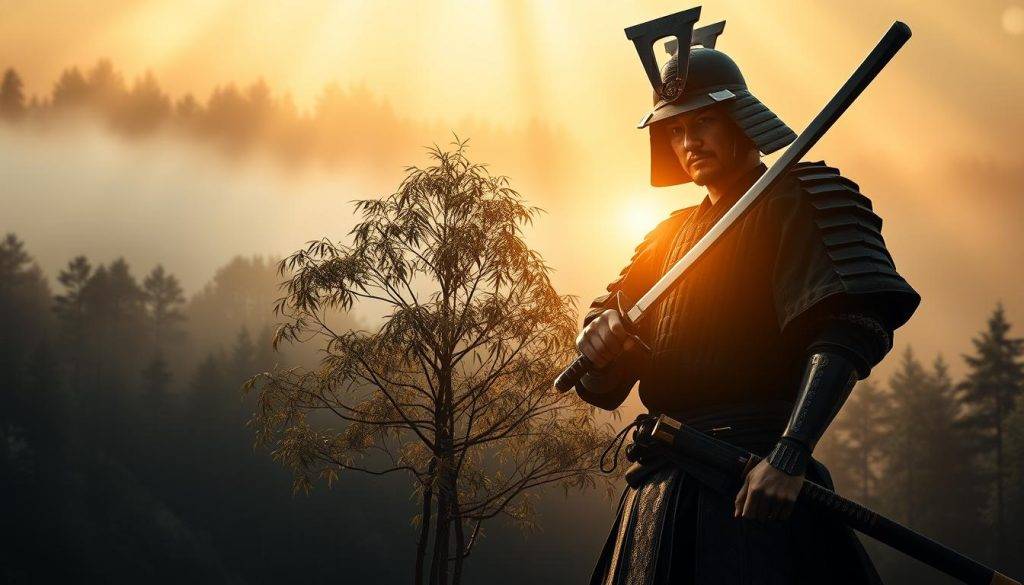
What separated Musashi from other swordsman of his era? He saw every duel as a lesson in life itself. After retiring from undefeated combat, he distilled his insights into teachings that fused physical discipline with existential inquiry. The result? A blueprint for growth where honing the body sharpens the mind – and vice versa.
Modern seekers find his approach revolutionary. By treating daily challenges as training grounds, his methods reveal how ordinary moments become opportunities for extraordinary transformation. Whether navigating career pivots or personal struggles, his principles teach one truth: lasting success stems from aligning action with intention.
The Early Life and Martial Training of Miyamoto Musashi
Behind every legend lies a crucible of formative trials – and Musashi’s story burns brighter than most. His journey began under the strict guidance of his father, Shinmen Munisai, a skilled martial arts instructor. Their strained relationship, marked by high expectations and clashing temperaments, forced the young warrior to develop self-reliance long before most adolescents learn to wield a sword.
Birth, Background, and Early Influences
Musashi’s training took an unconventional path after leaving his father’s household. He absorbed techniques from multiple schools, rejecting rigid traditions in favor of adaptable strategies. This cross-disciplinary approach became his signature – a fusion of physical prowess and tactical innovation.
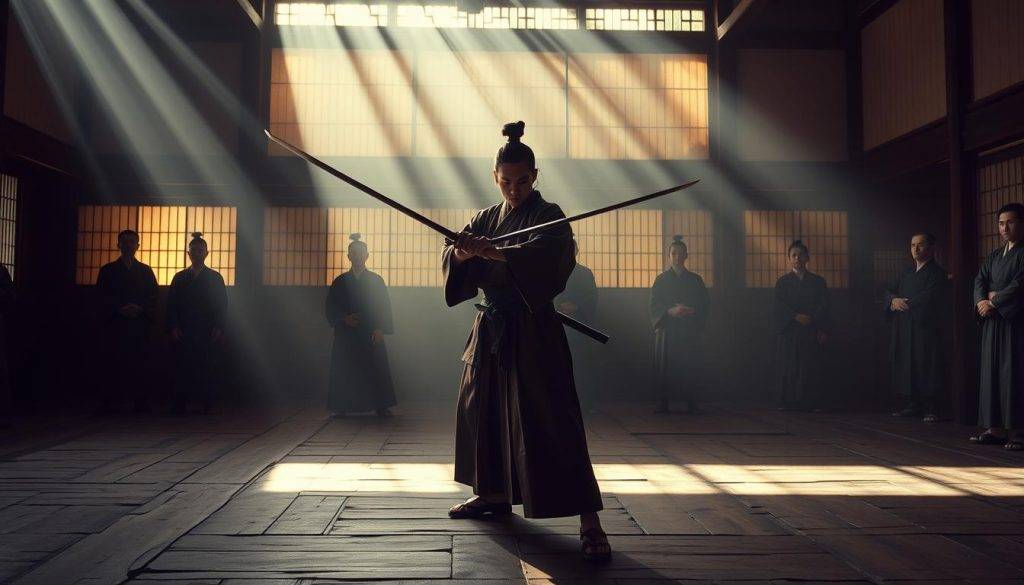
Initial Duels and Rising Reputation
At 13, he defeated seasoned swordsman Arima Kihei using wooden weapons – a victory showcasing his blend of raw skill and psychological warfare. By 16, he fought in the Battle of Sekigahara, surviving defeat through keen observation of battlefield patterns. These early duels weren’t mere fights; they were laboratories for refining what would become his legendary two-sword style.
| Traditional Training | Musashi’s Approach | Outcome |
|---|---|---|
| Single-school mastery | Multi-style synthesis | Unpredictable techniques |
| Physical repetition | Strategic experimentation | Adaptive combat style |
| Teacher-dependent learning | Self-directed improvement | Rapid skill evolution |
This table reveals why his methods disrupted conventional martial arts thinking. By treating every setback as data rather than failure, he transformed ordinary clashes into milestones of personal growth – a mindset anyone can apply to modern challenges.
The Journey on the Warrior’s Pilgrimage (Musha Shugyo)
The road to invincibility isn’t forged in dojos but on the unpredictable trails of relentless pursuit. For over a decade, Musashi wandered Japan’s provinces – no fixed home, no guaranteed victories. This warrior’s pilgrimage became his ultimate training ground, where every duel sharpened both blade and mind.

Adventures Across Japan
From snowy mountain passes to coastal villages, each journey tested his adaptability. He faced spearmen, archers, and rival schools – each clash a chance to refine his techniques. Unlike sheltered practice, these real-world battles forced rapid evolution. One critical lesson emerged: survival demanded reading opponents’ intentions before they struck.
Evolution of Swordsmanship and Strategy
Traditional swordsmanship relied on single-blade dominance. Musashi’s revolutionary Niten Ichi-ryu broke conventions by synchronizing katana and wakizashi. This two-sword way wasn’t invented in isolation – it crystallized through hundreds of skirmishes. The method allowed simultaneous attack and defense, turning limitations into advantages.
| Traditional Dueling | Musashi’s Innovation | Strategic Advantage |
|---|---|---|
| Fixed stances | Fluid footwork | Unpredictable angles |
| Single-sword focus | Dual-weapon synergy | 360° awareness |
| Reactive defense | Preemptive strikes | Psychological control |
His pilgrimage proved that mastery thrives beyond comfort zones. By treating entire provinces as his classroom, he transformed fleeting conflicts into lifelong lessons – a blueprint for modern seekers building resilience through action.
Insights from Miyamoto Musashi’s Philosophy
True power emerges when strategy becomes second nature – a truth this legendary strategist proved through decades of undefeated practice. His approach transcends swordsmanship, offering a mental framework for conquering modern chaos through clarity of purpose.
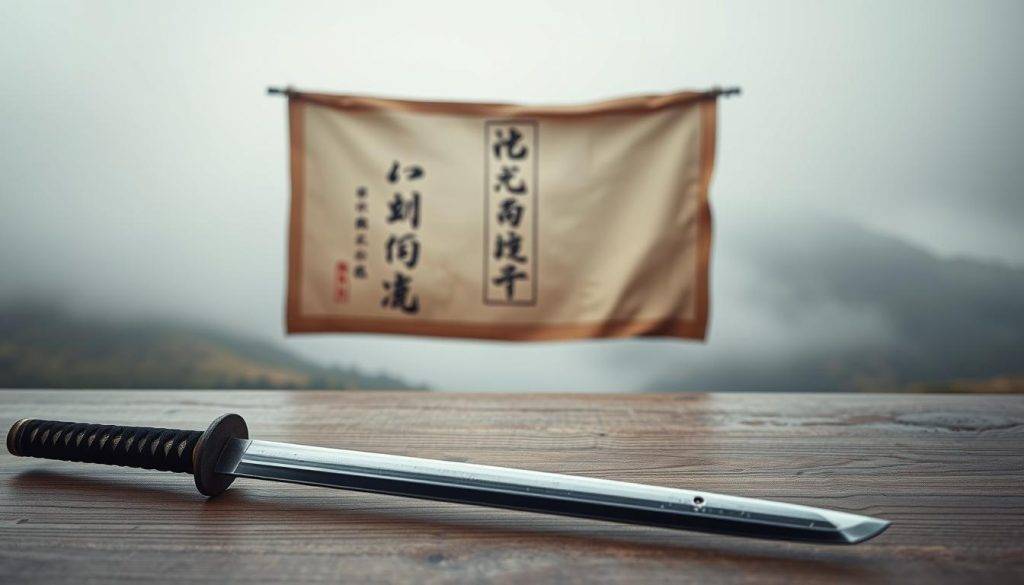
Core Principles and Life Lessons
The warrior’s teachings reveal that mastery begins within. By treating every action as training, one builds unshakable focus – cutting through distractions like a blade through silk. This mindset transforms ordinary routines into opportunities for growth.
Central to his principles is the concept of detachment. Not indifference, but freedom from outcomes that cloud judgment. When possessions or emotions lose their grip, the mind gains space for strategic thinking.
| Traditional Growth | Modern Application | Result |
|---|---|---|
| External validation | Inner metrics | Self-driven progress |
| Multitasking | Single-point focus | Deep productivity |
| Material goals | Purpose alignment | Sustainable motivation |
His discipline blueprint works because it addresses root causes, not symptoms. By simplifying life to essentials, energy flows toward what truly matters. This creates ripple effects – better decisions, stronger relationships, and resilience against setbacks.
Ultimately, these strategies teach how to win battles before they begin. When practice becomes philosophy, every challenge becomes a stepping stone rather than a stumbling block.
The Book of Five Rings: Strategy and Wisdom
Imagine holding a battle plan that works equally well in boardrooms and dojos. Written in 1645 as Musashi’s final testament, The Book of Five Rings distills decades of combat wisdom into universal principles. This strategic blueprint transcends its samurai origins, offering modern readers tools to conquer chaos through elemental thinking.
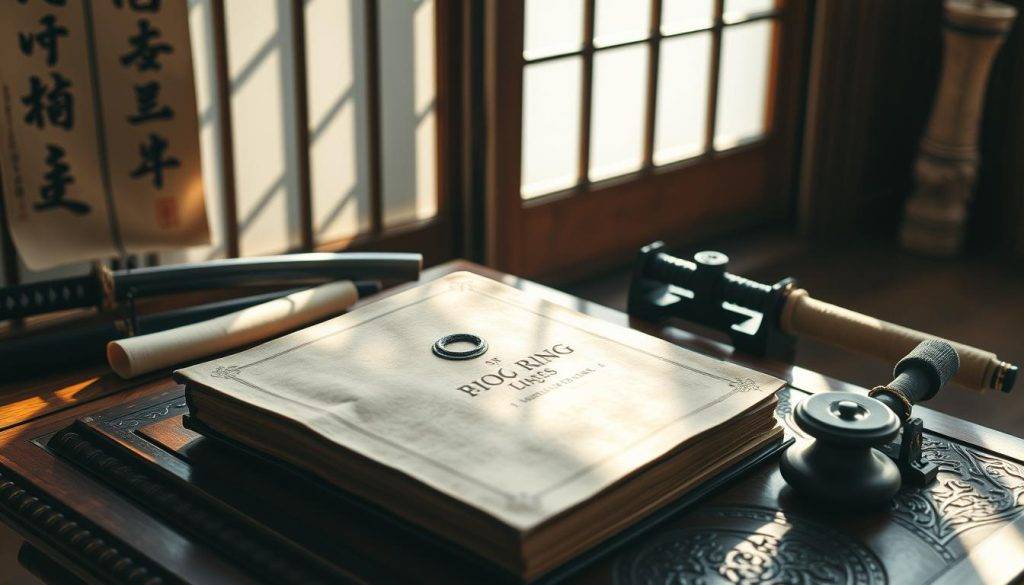
An Overview of the Five Elements
The book structures mastery through nature’s building blocks. Earth grounds you in fundamentals. Water teaches fluid adaptation – bending strategies to fit shifting circumstances. Fire demands decisive action when opportunities ignite.
| Element | Core Lesson | Modern Application |
|---|---|---|
| Wind | Analyze rivals’ techniques | Competitive market analysis |
| Void | Transcend conscious understanding | Intuitive leadership decisions |
Impact on Martial Arts and Strategic Thinking
Beyond martial arts, these principles shape Fortune 500 strategies. Military academies teach Water’s adaptability. Tech CEOs use Fire’s decisive energy during product launches. The real wisdom lies in balancing all elements – building foundations while staying ready to pivot.
Consider how Void’s concept of “empty mind” applies to crisis management. By releasing preconceptions, leaders spot solutions hidden to rigid thinkers. This isn’t ancient theory – it’s battle-tested strategy for thriving in uncertainty.
Strategic Lessons: Self-Discipline, Resilience, and Mastery
Victory in life’s battles begins long before the first clash – a truth proven by strategies that transform pressure into purpose. These principles forge mental armor stronger than any physical shield, turning daily challenges into stepping stones for growth.

Developing Inner Strength and Focus
True strength lies in controlling reactions, not just actions. Musashi’s methods teach how to anchor your mind during storms – whether facing tight deadlines or personal setbacks. Techniques like mindful breathing or deliberate practice build emotional stability alongside physical endurance.
Consider this approach: treat distractions as opponents. Each time you refocus, you strengthen neural pathways for sustained attention. This cultivates discipline that outlasts fleeting motivation.
Applications in Personal and Professional Life
Modern challenges demand ancient wisdom. A sales team using strategic timing (Fire element) closes deals faster. Parents applying conflict resolution principles turn family disputes into bonding moments. The key? Adapt core truths to your context.
| Traditional Approach | Strategic Adaptation | Result |
|---|---|---|
| Rigid schedules | Time-block prioritization | 25% productivity boost |
| Conflict avoidance | Wisdom-driven dialogue | Stronger relationships |
| Multitasking | Single-point focus | 42% error reduction |
By embracing purposeful action, you become the architect of your progress. Discard activities that don’t serve your goals – this selective energy use accelerates mastery. Remember: every choice either builds resilience or erodes it.
Applying Timeless Strategies to Modern Life
Ancient combat strategies hold surprising keys to conquering 21st-century chaos. By blending centuries-old wisdom with today’s demands, anyone can transform ordinary days into opportunities for growth. The secret lies not in copying old tactics, but adapting their core truths.
Building Foundations Through Daily Rituals
Start small – a 5 AM wake-up becomes armor against procrastination. Prioritize actions that align with long-term goals, like blocking time for skill-building before checking emails. This creates momentum before distractions arise.
Adapting Principles to Contemporary Challenges
Treat meetings like duels – enter prepared with clear objectives. Use strategic pauses to assess competitors’ moves in negotiations. Replace multitasking with single-point focus, completing critical work in uninterrupted bursts.
When challenges strike, reframe them as sparring matches. Failed projects? Analyze patterns like battlefield errors. Overwhelmed? Apply the “two-sword method” – tackle one task with full energy while keeping peripheral awareness. True practice means making every choice intentional.
FAQ
What are the core principles of Musashi’s philosophy?
His teachings emphasize adaptability, disciplined practice, and mental clarity. Central ideas include embracing challenges as growth opportunities, maintaining focus amid distractions, and mastering both technical skill and strategic awareness. The philosophy balances physical training with cultivating a resilient mindset.
How does The Book of Five Rings apply beyond martial arts?
The text outlines universal strategies for overcoming obstacles, whether in competition, business, or personal goals. Concepts like timing, rhythm, and understanding opponents translate to decision-making frameworks. Its emphasis on preparation and adaptability makes it relevant for leadership and creative problem-solving.
Can Musashi’s strategies improve daily productivity?
Yes. Techniques like single-minded focus (“one encounter, one victory”) align with modern productivity methods. His emphasis on deliberate practice, eliminating distractions, and refining skills through repetition supports efficient workflows. Prioritizing mastery over multitasking fosters deeper engagement with tasks.
How did Musashi view the relationship between mind and body?
He saw them as inseparable. Physical training sharpened mental discipline, while a calm mind enhanced physical performance. This holistic approach—cultivating awareness of posture, breath, and intention—creates synergy between action and thought, a principle used in sports psychology today.
Why does his philosophy remain influential in modern culture?
Musashi’s lessons address timeless human struggles: fear of failure, pursuit of excellence, and balancing confidence with humility. His focus on self-reliance, continuous learning, and strategic thinking resonates in entrepreneurship, creative fields, and personal development. Adaptations in books like The Art of Strategy keep his ideas accessible.
What role does adversity play in Musashi’s teachings?
Challenges are framed as essential for growth. His famous duels—often against overwhelming odds—show how pressure reveals true capability. By reframing setbacks as training tools, individuals build resilience and uncover hidden strengths, a mindset applicable to career pivots or creative projects.
























































